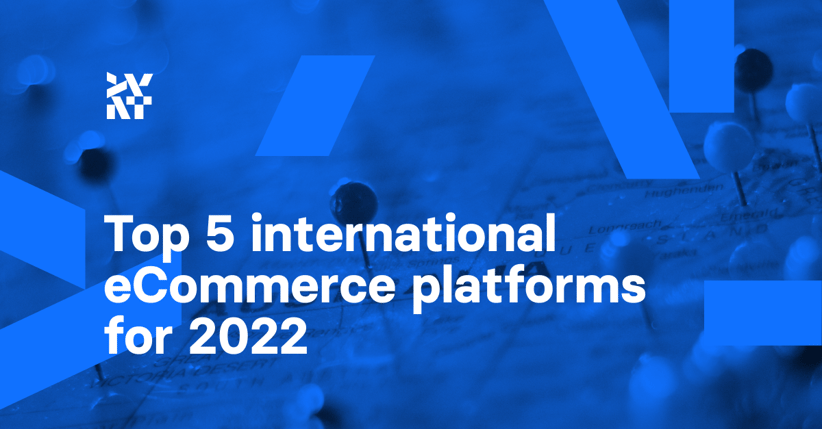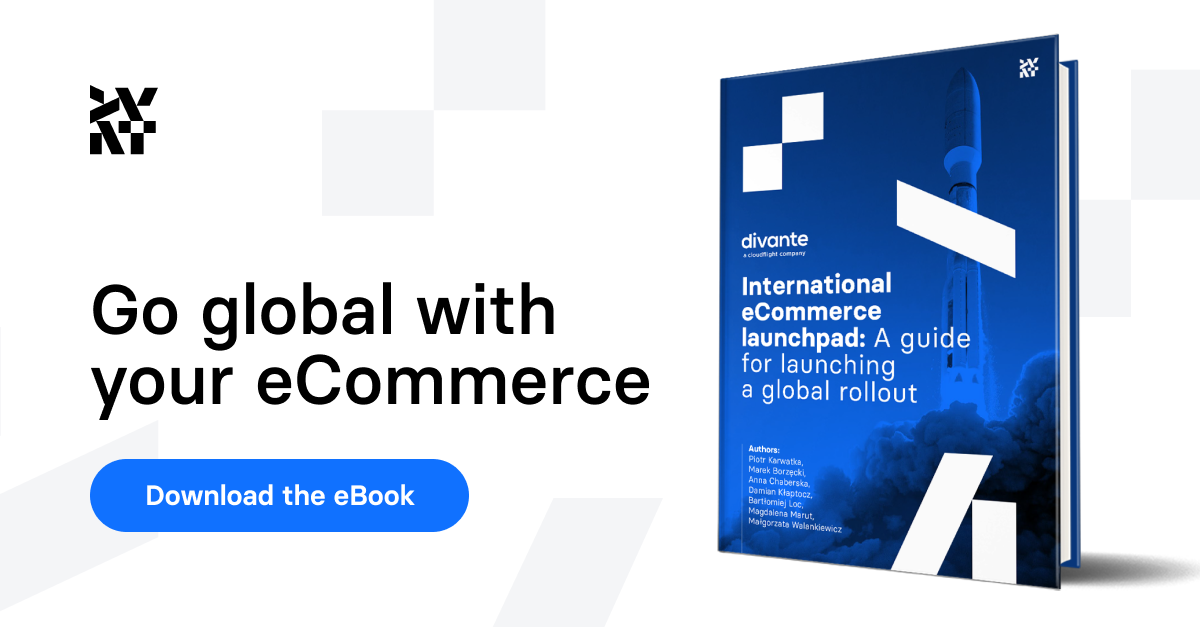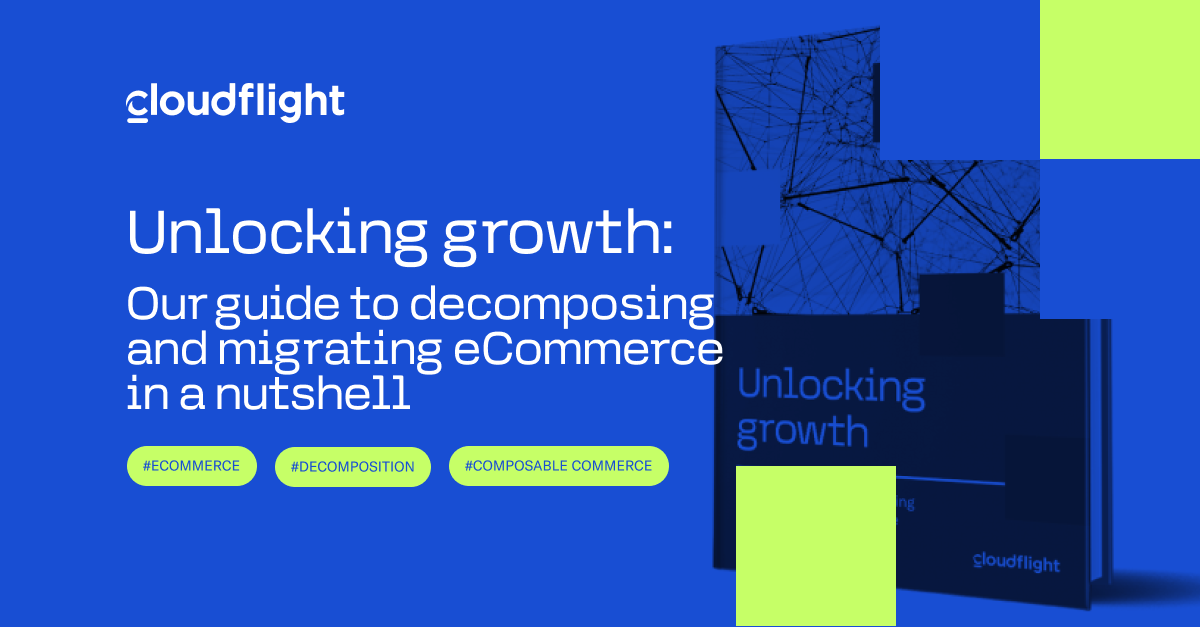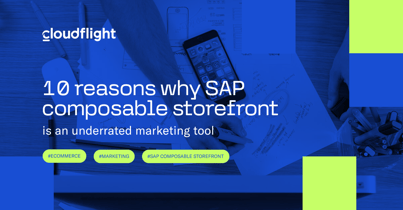Going global requires efficiency, reliability, and a certain set of features from your software. Building eCommerce for over 1,000 international brands, Divante has evaluated dozens of solutions that address the problems of international expansion.
Here’s our shortlist of the top five international eCommerce platforms in 2022. They are the safest bet to quickly roll out your new shops and stay relevant for the next couple of years.
This shortlist is based on an article titled “eCommerce platforms in the global setup.” You can read the piece in our International eCommerce launchpad eBook. It was written by Damian Kłaptocz, a business analyst at Divante, and it examines various international features of the software, ranging from country and language settings to pricing, taxes, and currencies. It’s an in-depth source and roadmap for any business that wants to scale up its sales to new markets.

commercetools
commercetools is on an excellent rising trend trajectory right now. It’s a powerful headless eCommerce-as-a-service platform with over 300 API endpoints and decoupled services. It gives you a great back-end core to build an infinitely scalable system.
“commercetools has rapidly gained popularity worldwide with Fortune Global 500 enterprises. Among their clients, you can find companies like Audi, Danone, Yamaha Motor, Volkswagen, Swarovski Optik, John Lewis & Partners, and Geberit.”
What makes commercetools a good solution for international eCommerce?
The answer is, of course, its flexibility. The structure of your assets in commercetools consists of projects, channels, and stores. It gives you good support for international rollouts with country-specific stores, multiple language versions, and custom rules. You can set taxes and currencies by project, specify them for each product and country, and plug in external payment solutions.
The basic eCommerce features are also available in commercetools just in case you don’t need anything fancy, which is rarely the case with the companies that choose this complex platform. It’s created with seamless and efficient API integrations in mind. It’s a base to plug in multiple external solutions for additional features in a complex headless architecture.
commercetools is a choice that we usually recommend as a foundation for large, enterprise-level systems. You can simply integrate it with your enterprise resource planning (ERP) system and leverage its composable nature by adding external best-of-breed integrations.
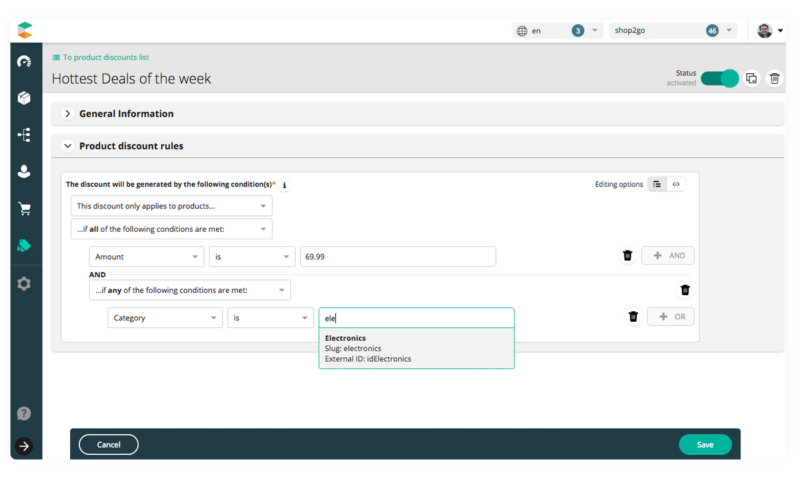
Read more on commercetools
Shopware 6
Shopware is a solution that fits the needs of small and midsized businesses but definitely isn’t limited to just smaller scale projects. It can be scaled up all the way to ente
rprise-level, and as such, it’s a safe bet for going global. It’s a platform that’s relatively easy to work with and migrate to.
“Shopware 6 is a future-oriented eCommerce platform, offering you a whole toolset for safe migration. As a result, you can break away from outdated technology and migrate your online business to a powerful, scalable, modern eCommerce solution, whether you are active in B2C or B2B.”
— Bartosz Picho, eCommerce Solution Architect at Divante
What makes Shopware a good solution for international eCommerce?
Shopware has well-developed features focused on localizing and building regional online shops. You can create custom designs for each sub-shop and add dedicated products. The country and language settings are easy to manage for each sales channel, and you can use language packs and plugins for translations.
“Following the multisite structure, there’s always a “main shop” and “sub-shops” that can be configured in Shopware 6. The main shop’s template and settings are, by default, inherited by sub-shops and can then be edited or replaced according to your needs. This solution allows you to create new sub-shops quickly. It’s instrumental when your company is heading for a few rollouts in one week.”
— Damian Kłaptocz, Business analyst at Divante
One of the biggest advantages of Shopware is the way it manages tax rates. They’re flexible and easy to use. You can assign countries, product categories, and postal codes. You can also set them for each channel independently.
In the end, Shopware is a great tool for global rollouts because it gives you quick shop deployment as well as a set of intuitive and powerful features for international eCommerce.
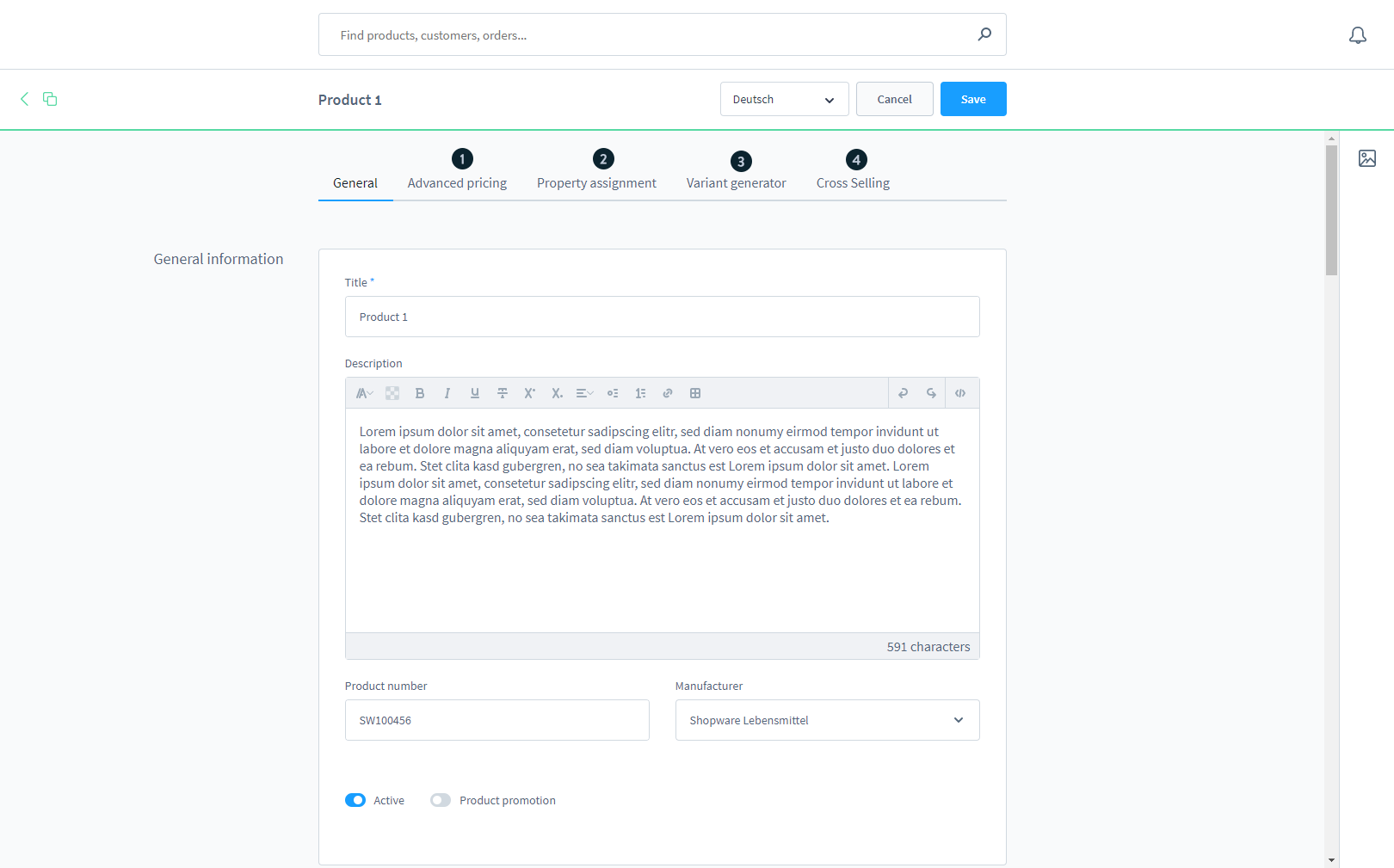
Read more on Shopware
- How to migrate to Shopware 6 from other platforms
- Shopware case study: yope
- Shopware case study: ikarus
- Shopware 6 development
Spryker Commerce
Spryker is a flexible set of solutions that allows for building complete API-based eCommerce platforms. It supports multi-store architecture, which makes it an interesting choice for international businesses.
“It’s not a ready-to-use product but rather a framework that provides the building blocks for an individual eCommerce solution. You can choose the blocks and extend the features for your project needs. It takes into account that each project is different, and each shop has its own processes and infrastructure and requires an individual approach.”
— Bartosz Picho, eCommerce Solution Architect at Divante
What makes Spryker a good solution for international eCommerce?
The core of a standard Spryker-based shop is a set of two solutions: Yves, a lightweight front end, and Zed, a back end with the business logic. It creates an extensible foundation to build upon.
To go global with Spryker, you have to configure a multi-store structure for your eCommerce. Each of the stores can have its own language and currency settings. The platform allows for adding multiple companies to a single Spryker instance and creating separate B2B and B2C websites. The shops can have various price types and stock types settings. You can also connect different ERP systems, content management systems (CMSs), and product information management (PIM) systems to each store. All of this creates good architecture for international commerce and omnichannel purposes.
Spryker provides you plenty of features, including various shipping, tax, and payment methods. It also has a quite unique set of out-of-the-box features, like presenting alternative products, discontinued products, or generating barcodes. You’ll rarely find them in the other eCommerce solutions.
To sum up, Spryker is a powerful modular tool to build custom eCommerce solutions.
“Spryker works best for large eCommerce businesses, especially in the B2B sector, so, if your company is looking for an international B2B platform, it is worth considering.”
— Damian Kłaptocz, Business analyst at Divante
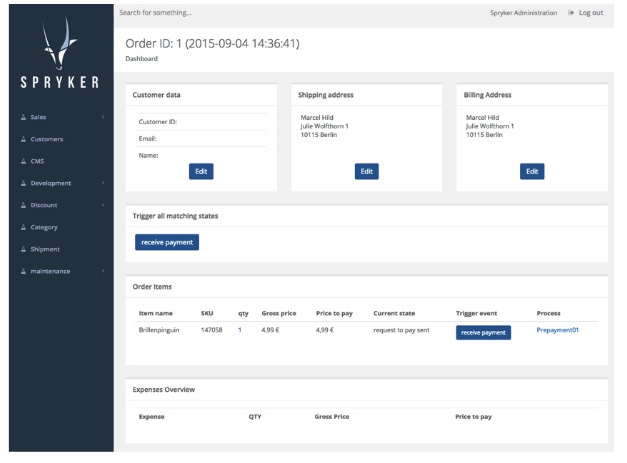
Read more on Spryker
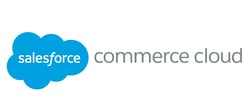 Salesforce Commerce Cloud
Salesforce Commerce Cloud
Salesforce Commerce Cloud is a well-known eCommerce platform for B2C and B2B retailers. As the name suggests, it’s a cloud-based SaaS solution, which contributes to its great scalability.
It’s a complete product, that allows you to do a lot without additional software development support.
“Global rollouts with Salesforce are relatively easy. Thanks to the secure and borderless infrastructure, you can minimize the risk and cost of entering new markets. There is a possibility to easily customize sites and pages, as well as blocks, which will take into account different cultures, languages, and currencies.”
— Damian Kłaptocz, Business analyst at Divante
What makes Salesforce a good solution for international eCommerce?
When it comes to international eCommerce, Salesforce can organize products, content, and offers by language, country, state, region, or city.
It has out-of-the-box storefront templates, integrations with Page Designer and Experience Builder, and you can set your own storefronts to stores. You can set currency-specific prices, multiple payment options, and set up different shipping rules that can be based on tax classes, currency, order value, and shipping cost. You can also translate the content with third-party vendors.
Honestly, the list of features is impressive. If you want to learn more about them, check out our eBook on launching international eCommerce.
All in all, Salesforce Commerce Cloud is a powerful cloud platform that covers all you need to build international eCommerce.
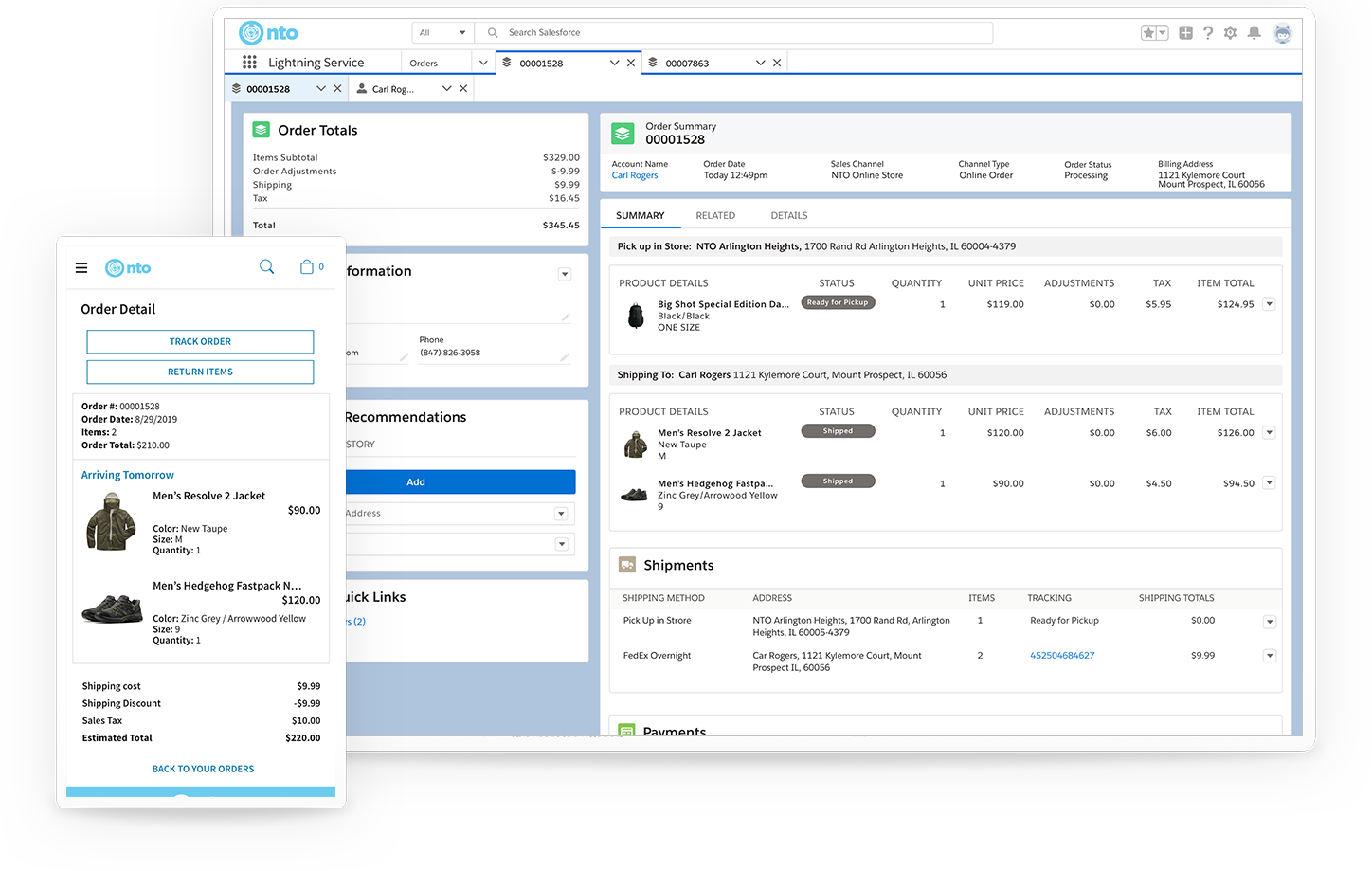
Read more on Salesforce Commerce Cloud
 Magento 2
Magento 2
Magento has been our main technology at Divante for years, and it used to be the unquestioned king of eCommerce tech. Now, the market is more diversified as new technologies kick in. With its enormous client base, Magento is slowly adapting to the new trends and keeps being nibbled at by competitors. Still, it’s our go-to tech in multiple situations as a powerful platform for midsized and large businesses.
“Its features make it one of the most popular international eCommerce engines.”
— Damian Kłaptocz, Business analyst at Divante
What makes Magento 2 a good solution for international eCommerce?
Being a complete platform, Magento has a set of features to support international shops. Its multisite structure management has three levels: website, store, and storeview.
“There are a lot of elements to set up, but it makes Magento 2 very flexible. If needed, the three-level structure allows for the sharing of carts and customer accounts among stores. Magento 2 multisite structure will work best for you if your stores have common payment and shipping methods or if you want to create separate stores for B2B and B2C customers in each country.”
— Damian Kłaptocz, Business analyst at Divante
You can customize the default country for each store and use free language packs or manually translate content. It doesn’t have an admin panel for translations, so it might require some development skills.
With the out-of-box Magento, you get the basic product and management for orders, customers, and groups. Multi-store inventory allows for assigning multiple warehouses, so products can have different stocks in each store. You can also set multiple currencies with a front-end currency switch connected to the country and user group settings. The taxes can be calculated based on postal codes.
In general, payment and shipping methods require additional modules, but there are also some predefined possibilities.
Read more on Magento 2
- Magento case study: Senetic
- Our post discussing if Magento can pivot in time to stay relevant
- Magento development
Summary: which platform to choose for a global rollout?
All of these solutions are powerful platforms that allow you to build and manage versatile multisite structures that will be the core of a successful international business. While they all have their limitations, they’re also extensible, so you can always develop them and shape them to your needs.
There are some rules of thumb. Spryker is flexible and customizable. You can adjust it to your particular needs, but it requires development. This being said, if you’re a small business looking for an off-the-shelf application, you’d probably rather go for a solution like Magento. commercetools will be a choice for bigger companies due to the higher budget requirements.
The question is not about which one of them will be able to cover your business needs. They will all do that with a proper dose of custom adjustments. We use all these technologies simultaneously in our international projects. The real issue is which one will fit into your particular needs in the most efficient way saving you hours and hours of expensive software development.
We’ve delivered over 1,000 projects for eCommerce companies, and we know that the problem of choosing the best eCommerce platform is very complex. It often depends not only on the software itself but also on the market environment, upcoming trends, availability of resources, and access to the developers that work in the particular software. You have to bet on a horse that will have a good run for the next couple of years to keep up with competitors and stay relevant.
You may think that you need a complex all-in-one solution that will solve all your problems right away. In modern composable commerce, you can sacrifice that complexity to get a set of best-of-breed solutions that will team up and connect to deliver better results.
Once again, it all depends on your business needs and requires a thorough understanding of the ever-changing market. If you want to get the proper answer, dig deeper into our eBook on international eCommerce. Of course, you can also talk to us about your eCommerce architecture, starting with your business goals. Our team will be happy to help.
Published May 5, 2022

